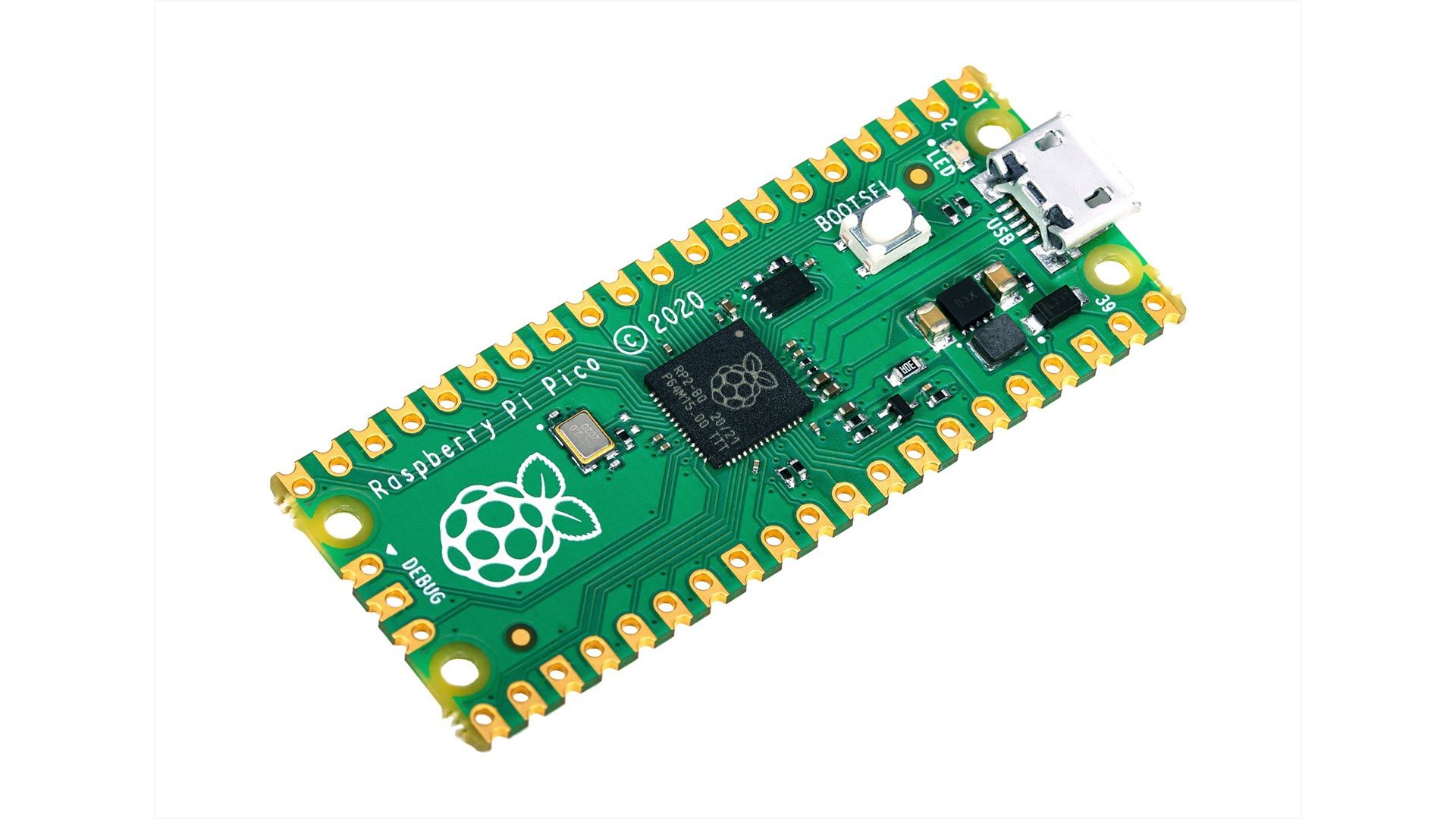Raspberry Pi kicked off a revolution in affordable single-board computers, but tinkerers often paired Pi devices with microcontrollers to accomplish tasks a Raspberry Pi can't on its own. The Raspberry Pi Foundation took its first steps to address that issue with its latest product, the $4 Raspberry Pi Pico.
If you think that the Pico sounds a lot like an Arduino board, you're not wrong. Like the Arduino Nano, it's small, low-powered, and supports analog input. The Pico uses custom silicon from the Raspberry Pi Foundation, dubbed RP2040, making it the first device from the foundation to use in-house silicon.
According to Raspberry Pi chief operating officer James Adams:
RP2040 builds on the lessons we've learned from using other microcontrollers in our products, from the Sense HAT to Raspberry Pi 400. It's the result of many years of hard work by our in-house chip team.
Since it's a microcontroller, it's underpowered from processor to RAM. It runs a dual-core Arm Cortex-M0+ running at 133MHz, 26 kilobytes of on-chip RAM, and it can support up to 16MB of off-chip Flash memory via a dedicated QSPI bus DMA controller. That's minuscule compared to a standard Raspberry Pi but in line with microcontrollers.
To support the Pico, the Raspberry Pi Foundation unveiled two new software development kits, a C SDK and a Pico Python SDK with MicroPython. Naturally, you'll find plenty of documentation on using both. You might think that Arduino would be worried about Raspberry Pi entering its domain, but that's not the case.
The foundation partnered with Arduino, Ardafruit, and others to create new boards based on the RP2040 processor. In Arduino's case, that means we'll soon see an Arduino Nano RP2040 Connect, which combines the new processor's power with Arduino's sensor know-how. Ardafruit introduced its own Feather RP 2040 and the ItsyBitsy RP 2040.
If you're curious, the RP2040 specs are as follows:
- Dual-core Arm Cortex-M0+ @ 133MHz
- 264KB (remember kilobytes?) of on-chip RAM
- Support for up to 16MB of off-chip Flash memory via dedicated QSPI bus
- DMA controller
- Interpolator and integer divider peripherals
- 30 GPIO pins, 4 of which can be used as analogue inputs
- 2 × UARTs, 2 × SPI controllers, and 2 × I2C controllers
- 16 × PWM channels
- 1 × USB 1.1 controller and PHY, with host and device support
- 8 × Raspberry Pi Programmable I/O (PIO) state machines
- USB mass-storage boot mode with UF2 support, for drag-and-drop programming
The Raspberry Pi Foundation says the $4 Pico is available today from its resellers. And it'll make the RP2040 processor available to customers in the second quarter of 2021.
Source: Raspberry Pi Blog

